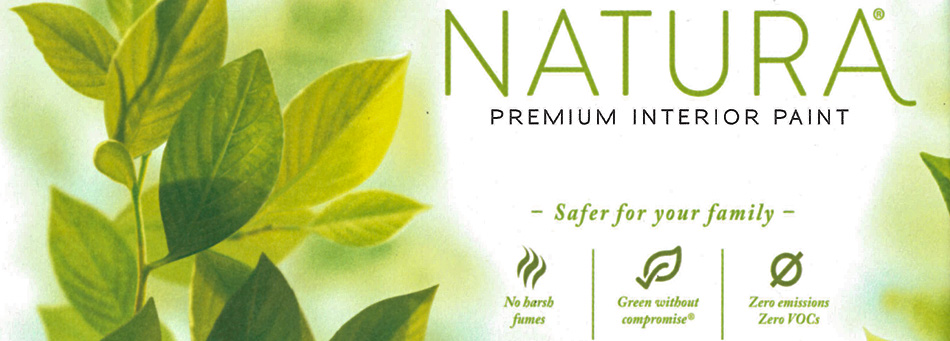View by Topic
Recent Articles
-
Federal Government Finalizes New Efficiency Standards for LightbulbsSaturday, April 13th, 2024
-
2024 IECC is Final After Addressing Preemption IssuesSaturday, April 6th, 2024
-
Settlement Portends Broad Failure in Attempts to Ban Natural GasSaturday, March 30th, 2024
-
SEC Climate Disclosure Rule Stay and Venue Now in the 8th CircuitSaturday, March 23rd, 2024
-
EV Charger Data ApocalypseSaturday, March 16th, 2024
View by Month/Year
“Green Building Law Update” Headlines
Recent Articles & News from
Stuart Kaplow’s blog
at GreenBuildingLawUpdate.com
- Shedding Light on the Future: The Evolution of Lightbulbs in the Wake of New Energy Efficiency Standards April 14, 2024
- 2024 International Energy Conservation Code is Final After Addressing Preemption April 7, 2024
- Settlement Portends Broad Failure in Attempts to Ban Natural Gas March 31, 2024
- SEC Climate Disclosure Rule Stay and Venue Now in the 8th Circuit March 24, 2024
Subscribe to the Green Building Law Update!
Stuart Kaplow brings his expertise and extensive experience to the table with his unique digital publication, "Green Building Law Update". Subscribers receive regular updates to keep them informed about important issues surrounding Environmental Law, Green Building & Real Estate Law, as well as the emerging demand for Environmental Social Governance (ESG).
Get fresh content through the lense of Stuart Kaplow's cutting-edge expertise, innovative commentary and insider perspective. Don't miss another issue! Subscribe below.

Paint Companies Settle FTC Charges Over Deceptive Zero VOC Claims
Four paint companies have agreed to settle Federal Trade Commission charges that they deceptively promoted products as containing zero volatile organic compounds (VOCs) or as emission free, including during and immediately after application. Some promotions also made explicit safety claims.
Specifically, the first FTC complaint alleges,
In connection with the advertising, promotion, offering for sale, or sale of Natura paints, Respondent has represented, directly or indirectly, expressly or by implication, that: a. Natura paints are emission-free.
b. Natura paints are emission-free during or immediately after painting.
c. Natura paints will not emit any chemical or substance, including VOCs, that causes material harm to consumers, including sensitive populations such as babies, asthmatics, and allergy sufferers.
d. Natura paints will not emit any chemical or substance, including VOCs, during or immediately after painting, that causes material harm to consumers, including sensitive populations such as babies, asthmatics, and allergy sufferers.
The FTC alleged, the company had no evidence to support those claims.
The four companies, Benjamin Moore & Co., Inc., ICP Construction Inc., YOLO Colorhouse, LLC, and Imperial Paints, LLC, have agreed to consent orders that would bar them from making unqualified VOC free and emission free claims.
VOCs are chemical compounds that easily evaporate at room temperatures. All paints emit chemicals during the painting process and while drying. Some of these chemicals can be harmful to the environment and people, especially to sensitive groups such as babies and those suffering from asthma or allergies. Arguably there is no zero VOC paint, but that was not the basis of these complaints.
In these four complaints, the FTC charged each company with making “unsubstantiated” claims that their paints were free of emissions and/or that they contained no VOCs, without any qualification (e.g., after X number of hours). The FTC also charged the companies with facilitating deception by retailers who sold their paint. Additionally, in its complaints against Benjamin Moore and ICP Construction, the FTC alleged that the companies marketed their paint using “Green Promise” and “Eco Assurance” environmental seals, respectively, without disclosing to consumers that they had awarded the seal to their own products.
Each of the proposed consent orders settling the charges against Benjamin Moore & Co., Inc., Imperial Paints, LLC, YOLO Colorhouse, LLC, and ICP Construction Inc. contains four provisions designed to ensure the companies do not engage in similar conduct in the future, including:
First, they would prohibit the companies from making unqualified VOC free claims and emission free, unless both content and emissions are actually zero, or emissions are at trace levels, beginning at application and thereafter. The proposed orders’ definition of “trace level of emissions,” which track the Green Guides,’ “trace amount” test, requires, in part, that emission at that level does not cause material harm that consumers typically associate with emission from the covered product, including harm to the environment or human health.
Second, they would prohibit the companies from making claims about VOC levels, emission, odor, and other environmental or health benefits, unless they are true and not misleading, and unless the companies have competent and reliable scientific evidence to back them up.
Third, to correct existing unsubstantiated claims, the orders would require the companies to send letters to their distributors, instructing them to stop using existing marketing materials and providing stickers or placards to correct misleading claims appearing on product packaging or labeling.
Fourth, the orders would bar the companies from providing third parties with the means of making false, unsubstantiated, or misleading representations about material facts regarding paints described.
The proposed orders against Benjamin Moore & Co., Inc. and ICP Construction Inc. contain two additional provisions, which would prohibit them from misrepresenting third party certifications and failing to adequately disclose a material connection with an endorser.
The Commission vote to accept the consent agreements was 2-0. The FTC published a description of the consent agreement packages in the Federal Register. The agreements are subject to public comment for 30 days through August 10, 2017, after which the Commission will decide whether to make the proposed consent orders final.
Note that the Commission issues an administrative complaint when it has “reason to believe” that the law has been or is being violated, and it appears to the Commission that a proceeding is in the public interest. When the Commission issues a consent order on a final basis, it carries the force of law with respect to future actions. Each violation of such an order may result in a civil penalty of up to $40,654.
There are potentially significant legal ramifications for owners of walls to which the paint has been applied, including those that utilized the application of paint on the 94% of LEED new construction 2009 projects that earned the indoor environmental quality credit for low emitting materials – paints and coatings, and there are implications for the design professionals who specified the product and for the erectors of buildings that applied it.









